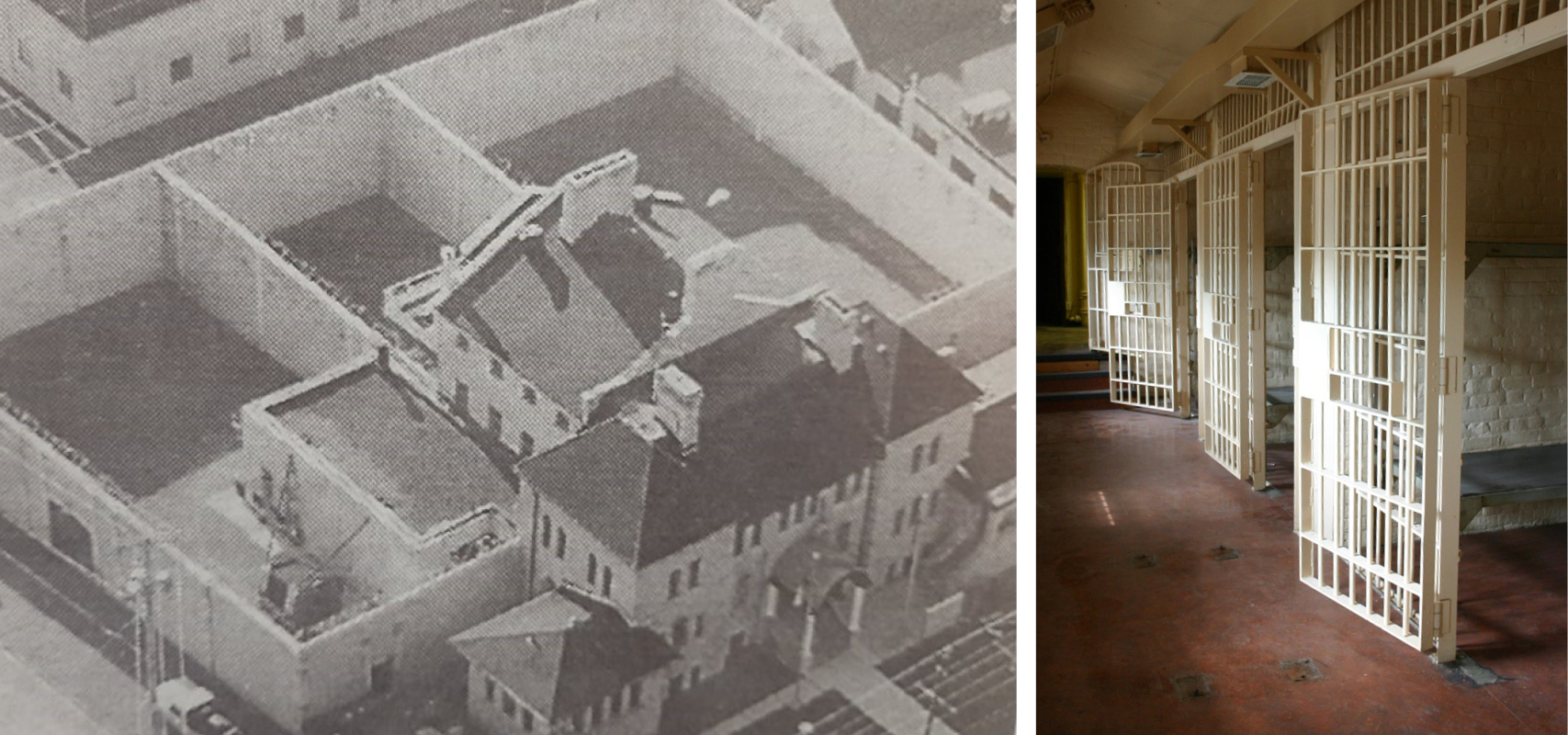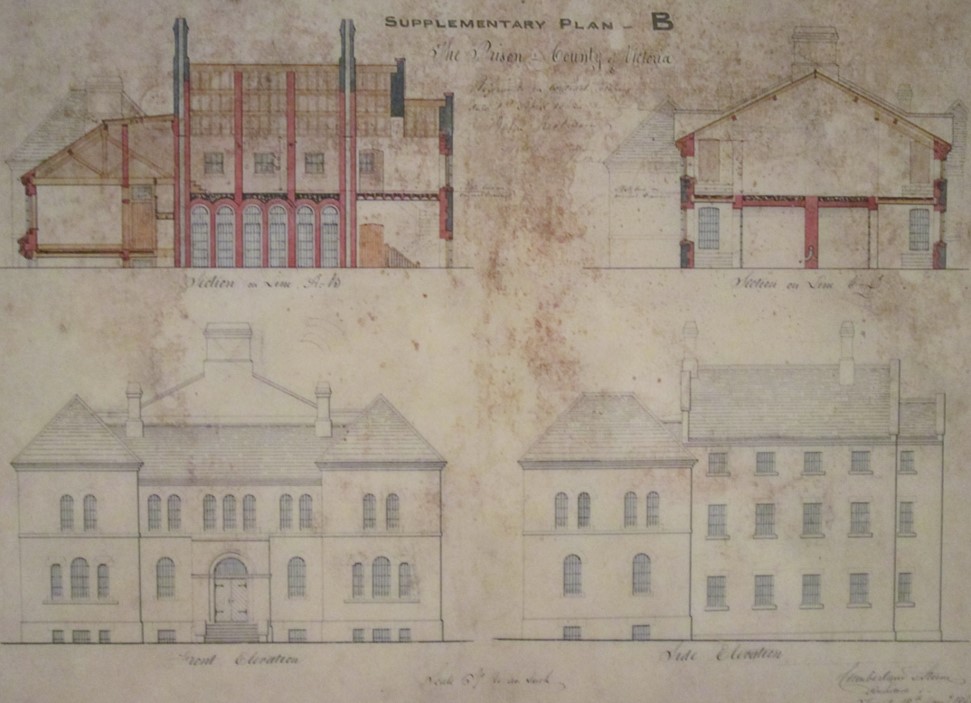Location: Lindsay, Ontario
Date of Completion: 1863
Architect: Cumberland and Storm
Dates of Renovation/Addition:1927, 1982, 2011
Architects of Renovation/Addition: John T. Hornsby (1927 verandah)
Nominated by: Laurie Scott, MPP (Haliburton—Kawartha Lakes—Brock)
A solemn structure in Lindsay’s former justice district, the Victoria County Gaol—now the Kawartha Lakes Museum & Archives—stands as testament to the values and ideas behind incarceration in 1800s Canada and the establishment of our modern prison system.
Incarceration in Early Canada
Built just prior to Confederation and the passage of Canada’s 1868 Penitentiary Act, the building is an early example of penitentiary design in Canada, embodying the ideas behind what was then a new form of punishment for law-breakers and convicts.
Prior to the 1779 British Penitentiary Act, convicted men and women were often subject to particularly cruel forms of punishment including public humiliation and torture, exile to the colonies, and execution. The 1779 Act introduced to the British Empire an alternative form of punishment through long-term incarceration, laying the beginnings of our modern prison system. By the early 1880s, penitentiaries—places of long-term incarceration with the goal of reforming individuals—would be introduced with the first of such facilities in Canada being the infamous 1835 Kingston Penitentiary.
This form of prison design owes its origin to American Quakers who believed a sentence of imprisonment, served in isolation, along with hard work and religious contemplation, would allow for convicts to reform, thus becoming penitents. Solitary confinement and forced labour were seen as avenues toward self-reflection and moral rehabilitation. Categorizing and holding inmates according to sex, age, and criminality reduced conflicts and “let the punishment fit the crime.”

Left: three rear courtyards enclosed by tall walls. Right: interior cells. Photos: Courtesy of Kawartha Lakes Museum & Archives
With its small cells and multiple courtyards, the Victoria County Gaol was built to support this new incarceration philosophy. Departing from communal spaces used to incarcerate large groups, the Victoria County Gaol has small cells designed to hold individuals, with a special cell block designed explicitly for solitary confinement. Three courtyards, confined by walls originally constructed of local clay bricks, provided space for hard labour, recreation, and even executions. This hard labour took many forms, including chopping wood as the heat source for Lindsay’s public buildings.
Over the years, additions and renovations provided for more cells and new forms of surveillance. The 1982 renovations introduced a control room where guards could control all the doors and lights in the cell blocks without interacting with prisoners. The Old Gaol would remain operational as a correctional institution until February 2003 when the remaining inmates were relocated to the Central East Correctional Centre just outside of Lindsay.

Original section and elevation drawings of the gaol. Photo: courtesy of Kawartha Lakes Museum & Archives.
Image of Solidity
Designed by noted Toronto architect William G. Storm–the first president of the Ontario Association of Architects–both the Victoria County Gaol, along with the adjacent courthouse (now Lindsay City Hall), were part of a larger justice district built in Lindsay after Victoria County separated from Peterborough County.
Italianate in style, the building’s simple, symmetrical form and rusticated stone walls were meant to exude a sense of impenetrability, fortitude, and solidity—fitting qualities for a correctional facility. The white limestone walls are punctured by small round-arch windows, one for each cell, all of them protected with metal bars. Cement block walls several feet thick, reinforced foundations, and specialized brick work were all part of the jail’s defences. Despite this image of impenetrability and numerous security upgrades, the Old Gaol was the site of numerous escapes throughout its 140-year history.
Today, the old prison has found a new use as the home of the Kawartha Lakes Museum and Archives, which moved into the building in 2011. The KLMA preserves and promotes the cultural history of the City of Kawartha Lakes.
This post forms part of our World Architecture Day Queen’s Park Picks 2022 series in which the OAA asked Ontario’s Members of Provincial Parliament (MPPs) to nominate a prominent building, past or present, in their riding for a chance to learn more about it. Check out the rest of the series to learn more about great buildings across the province!